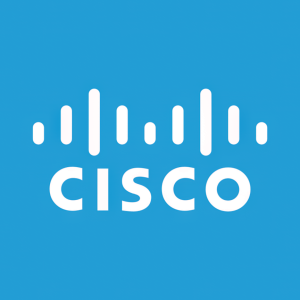Sustainability Through Cisco’s Circular Business Practices
- None.
- None.
NORTHAMPTON, MA / ACCESSWIRE / December 12, 2023 / Cisco Systems Inc.

by Tim Coogan
In the fast-paced digital age, electronic waste, commonly known as e-waste, has emerged as a formidable environmental challenge. With the relentless advancement of technology, the disposal of electronic devices has skyrocketed, leading to harmful consequences for our planet.
According to a study conducted by the United Nations in 2019, the world generates approximately 50 million tons of e-waste annually, and only
However, amidst this pressing concern, a glimmer of hope shines through the concept of the circular economy. Embracing a circular approach means reimagining the lifecycle of products, encouraging reuse, refurbishment, and recycling to minimize waste and resource depletion. As businesses play a pivotal role in shaping the future, their sustainability efforts are now more critical than ever.
At Cisco, we are focused on evolving from a linear economy, where products are used and then thrown away, to a circular economy that makes better use of our limited natural resources.
Cisco seeks to incorporate sustainability into its business practices, and part of our strategy involves minimizing the environmental impact as we develop, deploy, AND manage products at end of use in order to foster a more sustainable future. Here are some ways Cisco is working to improve sustainability throughout our value chain.
Circular Design Principles
By prioritizing responsible product design and keeping sustainability at the forefront of these decisions, we are focused on reducing environmental impact, enhancing customer satisfaction, reducing costs, and fostering innovation, ultimately supporting a stronger market position and a more sustainable future.
At Cisco, we have a goal to incorporate Circular Design Principles into
Product Takeback and Recycling Programs
Cisco's commitment to circular economy principles extends to the end-of-use stage of products. By establishing robust product takeback, reuse and recycling programs, such as Cisco's Product Takeback and Reuse, Customer Recycling Solutions and Cisco Refresh, we are prioritizing responsible reuse, recycling, and disposal of our products and we encourage our customers and partners to participate in these programs. Nearly 100 percent of the products that are returned to Cisco are reused or recycled.
Embracing the Internet of Things (IoT) for Resource Optimization
By integrating IoT devices into operations, businesses can gather real-time data from various sources, enabling them to make informed decisions that can reduce resource waste while increasing efficiency.
Building operations, a source of up to 27 percent of carbon emissions in the world, are one example of what IoT can support. At Cisco's Penn 1 office in New York, a recent retrofit added 5,000 IoT sensors and connected devices to the company's 9th floor space, providing a constant stream of data that informs automated lighting, environmental, and other systems, running on low-voltage DC power from the network itself.
Collaboration and Advocacy
Cisco actively collaborates with industry partners, governments, and non-profit organizations to drive awareness and action in combating e-waste. We participate in policy discussions, share best practices, and advocate for sustainable practices across the industry. By fostering collaboration, Cisco amplifies its impact and encourages others to adopt circular economy principles.
Through programs like Cisco Green Pay, Cisco helps engage customers in the circular economy.
Cisco Green Pay is an IT payment solution that makes it easier for customers to build a sustainable technology strategy, simplifying budgeting for environmental, social, and governance (ESG) goals, and provides a path towards a more sustainable future for not just their own operations but possibly for other companies worldwide.
By embracing innovative product design, resource optimization, and responsible product end-of-use practices (including returns, reuse, and recycling), Cisco is setting a precedent for reducing waste, conserving resources, and reducing environmental impact.
Learn more about Cisco's payment solutions to support a circular economy or visit the ESG Hub for more on Cisco's product sustainability practices.
View additional multimedia and more ESG storytelling from Cisco Systems Inc. on 3blmedia.com.
Contact Info:
Spokesperson: Cisco Systems Inc.
Website: https://www.3blmedia.com/profiles/cisco-systems-inc
Email: info@3blmedia.com
SOURCE: Cisco Systems Inc.
View the original press release on accesswire.com
FAQ
What is Cisco Systems Inc.'s approach to combating e-waste?
What are Cisco Systems Inc.'s Circular Design Principles?
How does Cisco Systems Inc. handle product takeback and recycling?
How does Cisco Systems Inc. utilize the Internet of Things (IoT) for resource optimization?







